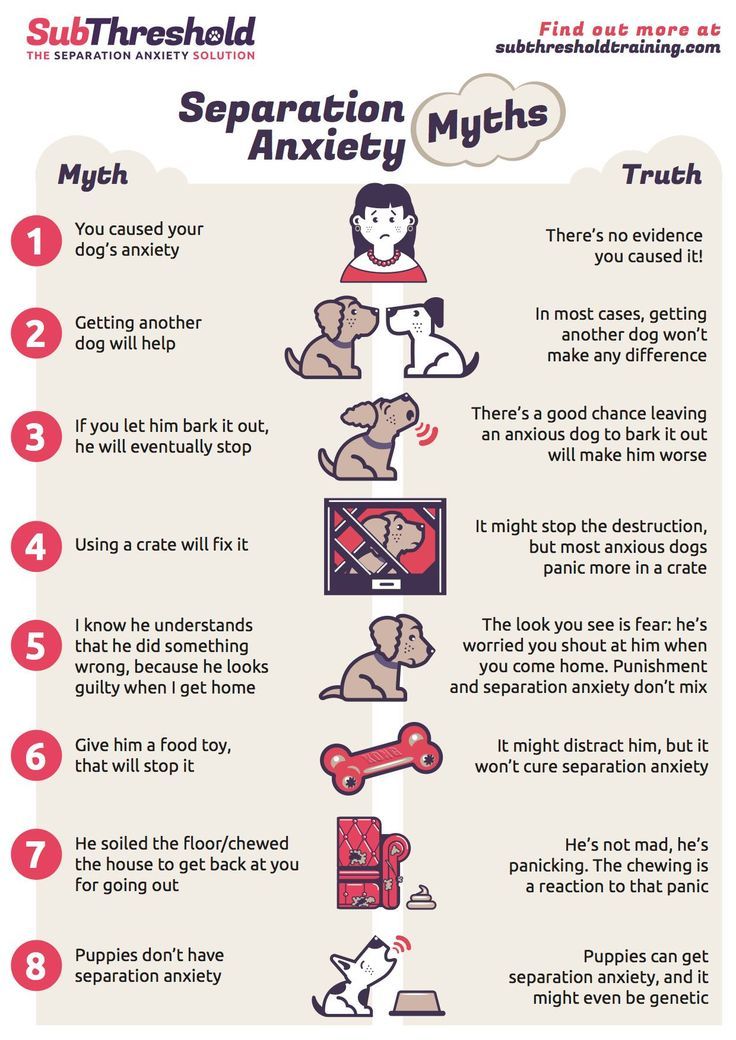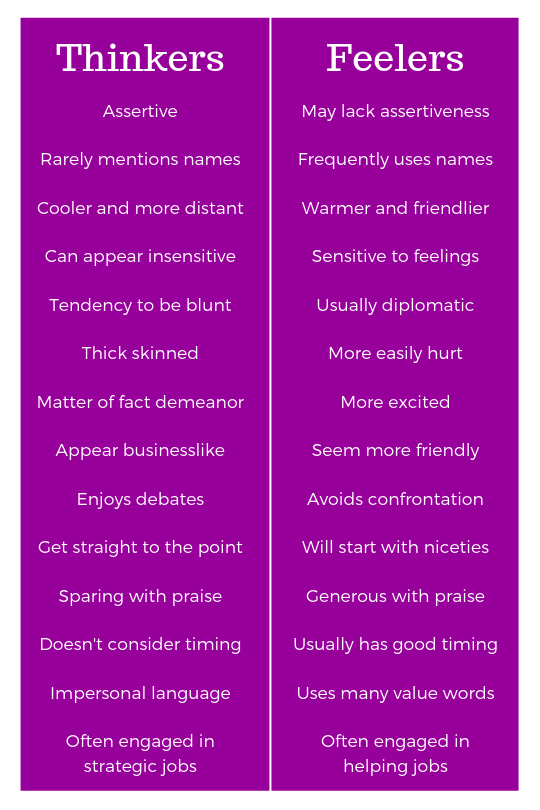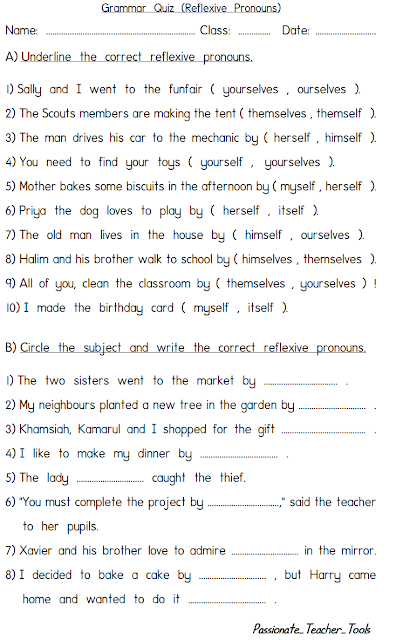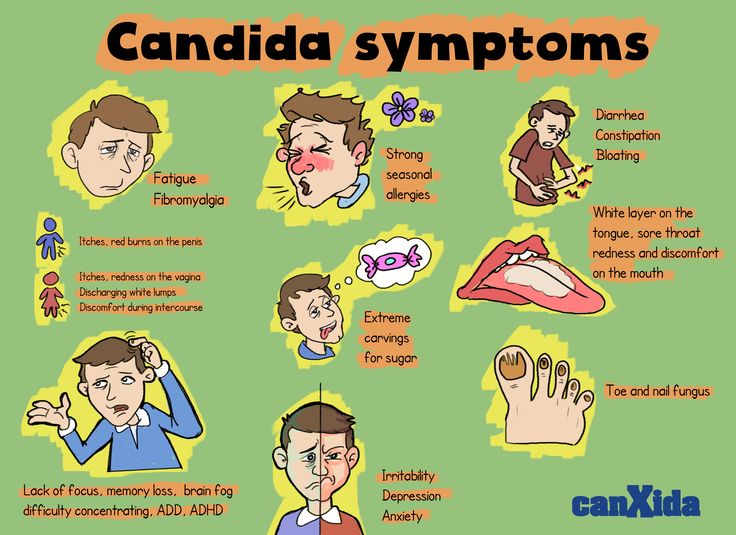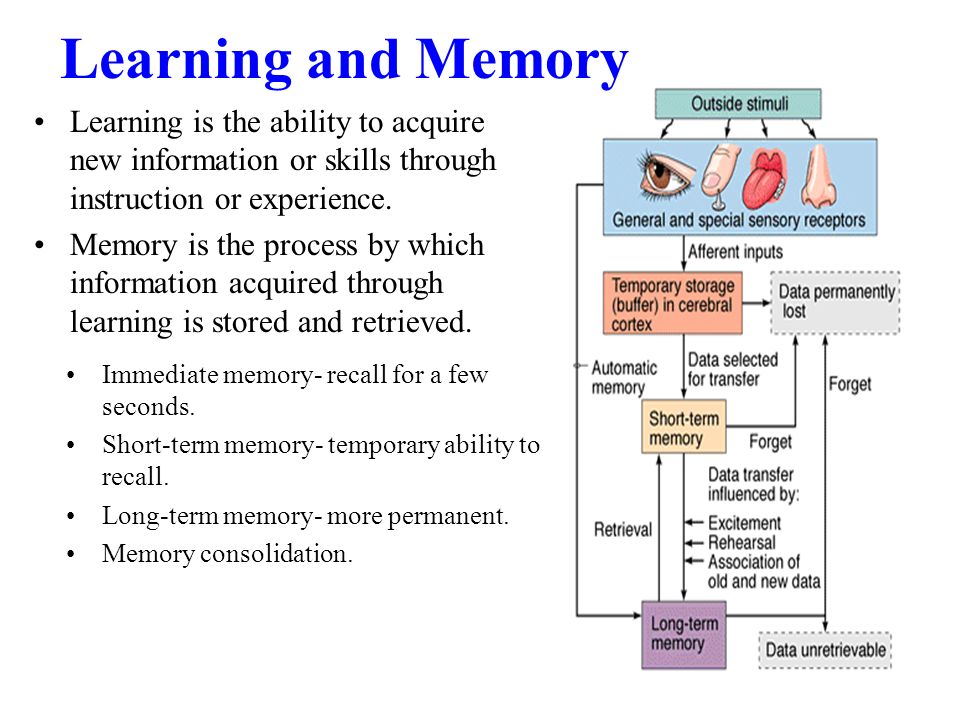2 years old separation anxiety
Separation Anxiety Disorder in Children
ABOUT CAUSES DIAGNOSIS TREATMENT NEXT STEPS
What is separation anxiety disorder in children?
Separation anxiety disorder (SAD) is a type of mental health problem. A child with SAD worries a lot about being apart from family members or other close people. The child has a fear of being lost from their family or of something bad occurring to a family member if he or she is not with the person.
All children and teens feel some anxiety. It is a normal part of growing up. Separation anxiety is normal in very young children. Nearly all children between the ages of 18 months and 3 years old have separation anxiety and are clingy to some degree. But the symptoms of SAD are more severe. A child must have symptoms of SAD for at least 4 weeks for the problem to be diagnosed as SAD.
A child with SAD has worries and fears about being apart from home or family that are not right for his or her age.
What causes separation anxiety disorder in a child?
Experts believe SAD is caused by both biological and environmental factors. A child may inherit a tendency to be anxious. An imbalance of 2 chemicals in the brain (norepinephrine and serotonin) most likely plays a part.
A child can also learn anxiety and fear from family members and others. A traumatic event may also cause SAD.
Which children are at risk for separation anxiety disorder?
SAD happens equally in males and females. But children who have parents with an anxiety disorder are more likely to have SAD.
What are the symptoms of separation anxiety disorder in a child?
The first symptoms of SAD often appear around the third or fourth grade. They may start after a break from school, such as during holidays or summer, or after a long-term sickness. Each child may have different symptoms.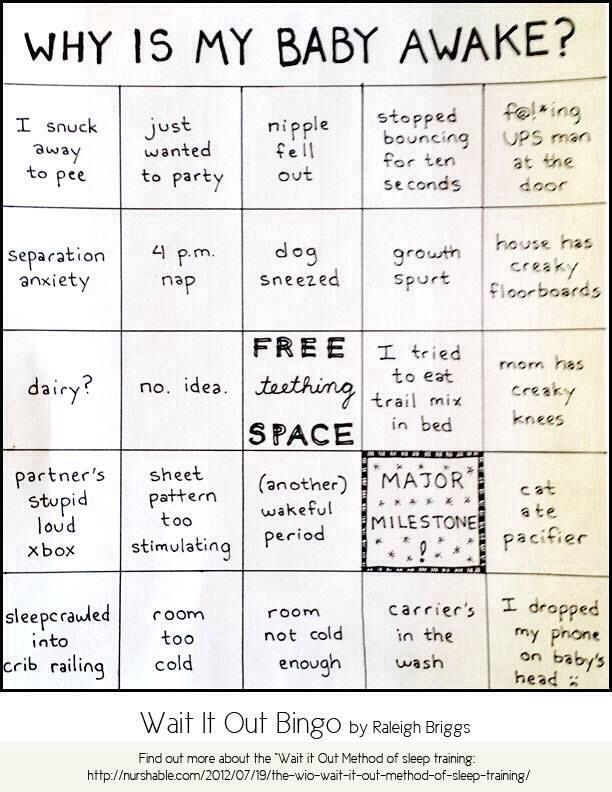 But the most common signs of SAD are:
But the most common signs of SAD are:
- Refusing to sleep alone
- Repeated nightmares with a theme of separation
- Lots of worry when parted from home or family
- Too much worry about the safety of a family member
- Too much worry about getting lost from family
- Refusing to go to school
- Fearful and reluctant to be alone
- Frequent stomachaches, headaches, or other physical complaints
- Muscle aches or tension
- Too much worry about safety of self
- Too much worry about or when sleeping away from home
- Being very clingy, even when at home
- Panic or temper tantrums at times of separation from parents or caregivers
The symptoms of SAD may look like other health problems. Make sure your child sees his or her healthcare provider for a diagnosis.
How is separation anxiety disorder diagnosed in a child?
A child psychiatrist or other mental health expert can diagnose SAD. He or she will do a mental health evaluation of your child. For your child to be diagnosed with SAD, his or her worry or fear about being away from family members must last for at least 4 weeks.
If your child has physical complaints, your primary healthcare provider may assess your child to rule out other causes for these symptoms.
How is separation anxiety disorder treated in a child?
Treatment will depend on your child’s symptoms, age, and general health. It will also depend on how severe the condition is.
Treatment for SAD often involves a mix of the following:
- Cognitive behavioral therapy. This treatment helps a child learn how to better handle his or her anxiety. The goal is also to help a child master the situations that may lead to the anxiety.

- Medicines. Antidepressant or antianxiety medicine may help some children feel calmer.
- Family therapy. Parents play a vital role in any treatment.
- School input. A child’s school may also be involved in care.
How can I help prevent separation anxiety disorder in my child?
Experts don’t know how to prevent SAD in children and teens. But if you notice signs of SAD in your child, you can help by seeking an evaluation as soon as possible. Early treatment can lessen symptoms and enhance your child’s normal development. It can also improve your child’s quality of life.
How can I help my child live with separation anxiety disorder?
As a parent, you play a key role in your child’s treatment. Here are things you can do to help:
- Keep all appointments with your child’s healthcare provider.

- Show your child reassurance and support. Encourage age-appropriate independence.
- Recognize situations that may stress your child. Knowing what stresses your child and planning ahead can help you prepare your child so he or she is successful.
- Tell others about your child’s SAD. Work with your child’s healthcare provider and school to develop a treatment plan. Remind teachers that your child will need extra reassurance and support in certain situations.
- Reach out for support from local community services. Being in touch with other parents who have a child with SAD may be helpful.
Key points about separation anxiety disorder in children
- SAD is a type of mental health problem. A child with SAD worries a lot about being apart from family members or other close people.
- The cause of SAD is both biological and environmental.
- Symptoms of SAD are more severe than the normal separation anxiety that nearly every child has to some degree between the ages of 18 months and 3 years of age.
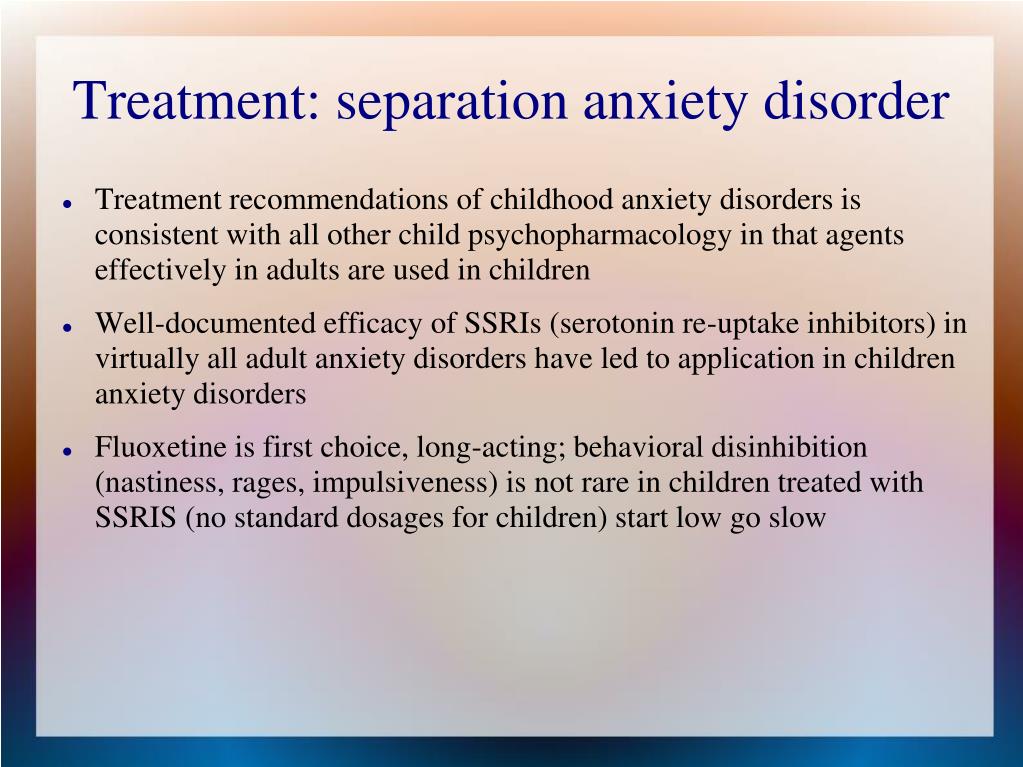
- A child must have symptoms that last at least 4 weeks to be considered SAD.
- A mental health evaluation is needed to diagnose SAD.
- Treatment includes therapy and medicines.
Next steps
Tips to help you get the most from a visit to your child’s healthcare provider:
- Know the reason for the visit and what you want to happen.
- Before your visit, write down questions you want answered.
- At the visit, write down the name of a new diagnosis, and any new medicines, treatments, or tests. Also write down any new instructions your provider gives you for your child.
- Know why a new medicine or treatment is prescribed and how it will help your child. Also know what the side effects are.
- Ask if your child’s condition can be treated in other ways.
- Know why a test or procedure is recommended and what the results could mean.
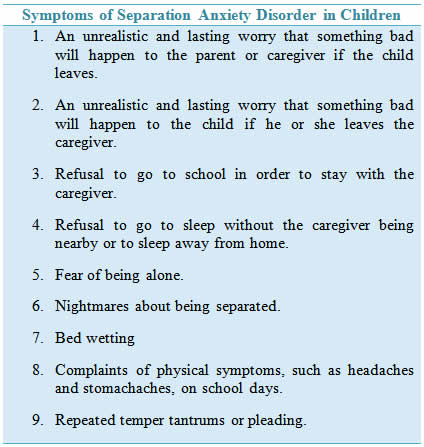
- Know what to expect if your child does not take the medicine or have the test or procedure.
- If your child has a follow-up appointment, write down the date, time, and purpose for that visit.
- Know how you can contact your child’s provider after office hours. This is important if your child becomes ill and you have questions or need advice.
How to Ease Your Child’s Separation Anxiety
Log in | Register
Ages & Stages
Ages & Stages
Listen
Español
Text Size
By: Wendy Sue Swanson, MD, MBE, FAAP
Separation anxiety varies WIDELY between children. Some babies become hysterical when mom is out of sight for a very short time, while other children seem to demonstrate ongoing anxiety at separations during infancy, toddlerhood, and preschool.
To all you working parents
The trick for surviving separation anxiety demands preparation, brisk transitions, and the evolution of time. I would suggest we parents suffer as much as our children do when we leave. Even though we are often reminded that our children stop crying within minutes of our leave-taking, how many of you have felt like you’re "doing it all wrong" when your child clings to your legs, sobs for you to stay, and mourns the parting?
As a working parent, separation anxiety creates questions for me. Although it is an entirely normal behavior and a beautiful sign of a meaningful attachment, separation anxiety can be exquisitely unsettling for us all.
Here are facts about separation anxiety and tips to improve the transitions I’ve learned the hard way (I’ve made about every mistake):
Facts about separation anxiety
Infants: Separation anxiety develops after a child gains an understanding of object permanence.
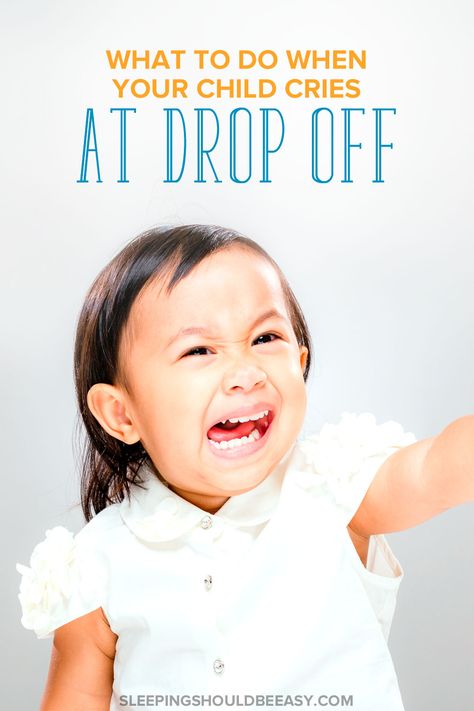 Once your infant realizes you’re really gone (when you are), it may leave them unsettled. Although some babies display object permanence and separation anxiety as early as 4 to 5 months of age, most develop more robust separation anxiety at around 9 months. The leave- taking can be worse if your infant is hungry, tired, or not feeling well. Keep transitions short and routine if it’s a tough day.
Once your infant realizes you’re really gone (when you are), it may leave them unsettled. Although some babies display object permanence and separation anxiety as early as 4 to 5 months of age, most develop more robust separation anxiety at around 9 months. The leave- taking can be worse if your infant is hungry, tired, or not feeling well. Keep transitions short and routine if it’s a tough day.Toddlers: Many toddlers skip separation anxiety in infancy and start demonstrating challenges at 15 or 18 months of age. Separations are more difficult when children are hungry, tired, or sick—which is most of toddlerhood! As children develop independence during toddlerhood, they may become even more aware of separations. Their behaviors at separations will be loud, tearful, and difficult to stop.
Preschoolers: By the time children are 3 years of age, most clearly understand the effect their anxiety or pleas at separation have on us.
 It doesn’t mean they aren’t stressed, but they certainly are vying for a change. Be consistent; don’t return to the room based on a child’s plea, and certainly don’t cancel plans based on separation anxiety. Your ongoing consistency, explanations, and diligence to return when you say you will are key.
It doesn’t mean they aren’t stressed, but they certainly are vying for a change. Be consistent; don’t return to the room based on a child’s plea, and certainly don’t cancel plans based on separation anxiety. Your ongoing consistency, explanations, and diligence to return when you say you will are key.
How to survive separation anxiety
Create quick good-bye rituals. Even if you have to do major-league- baseball–style hand movements, give triple kisses at the cubby, or provide a special blanket or toy as you leave, keep the good-bye short and sweet. If you linger, the transition time does too. So will the anxiety.
Be consistent. Try to do the same drop-off with the same ritual at the same time each day you separate to avoid unexpected factors whenever you can. A routine can diminish the heartache and will allow your child to simultaneously build trust in her independence and in you.
Attention: When separating, give your child full attention, be loving, and provide affection.
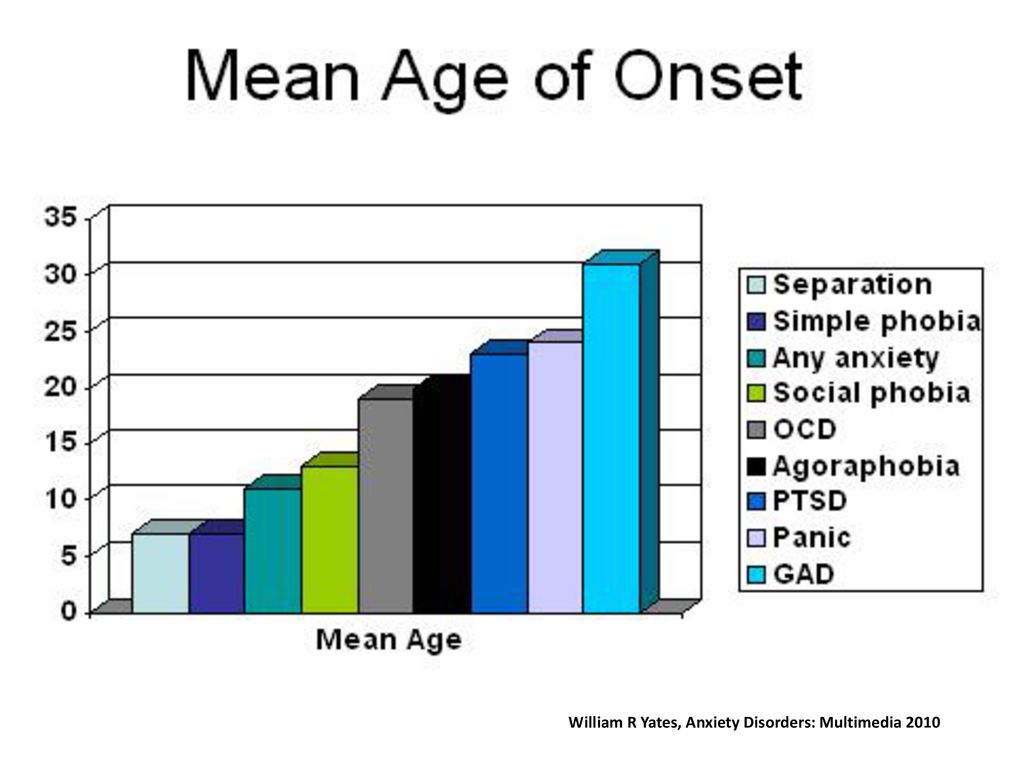 Then say good-bye quickly despite their antics or cries for you to stay.
Then say good-bye quickly despite their antics or cries for you to stay.Keep your promise. You’ll build trust and independence as your child becomes confident in her ability to be without you when you stick to your promise of return. The biggest mistake I ever made in this regard was returning to class to "visit" my son about an hour after a terrible transition. I was missing him, and although the return was well intended, I not only extended the separation anxiety, we started all over again in the process. When I left the second time (and subsequent days) it was near nuclear.
Be specific, child style. When you discuss your return, provide specifics that your child understands. If you know you’ll be back by 3:00 pm, tell it to your child on their terms; for example, say, "I’ll be back after nap time and before afternoon snack." Define time they can understand. Talk about your return from a business trip in terms of "sleeps.
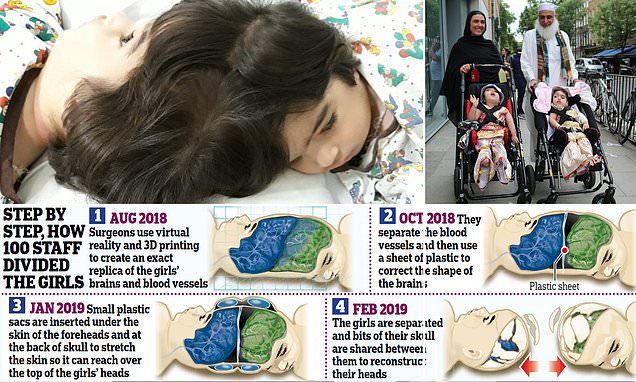 " Instead of saying, "I’ll be home in 3 days," say, "I’ll be home after 3 sleeps."
" Instead of saying, "I’ll be home in 3 days," say, "I’ll be home after 3 sleeps."Practice being apart. Ship the children off to grandma’s home, schedule playdates, allow friends and family to provide child care for you (even for an hour) on the weekend. Before starting child care or preschool, practice going to school and your good-bye ritual before you even have to part ways. Give your child a chance to prepare, experience, and thrive in your absence!
It’s rare that separation anxiety persists on a daily basis after the preschool years. If you’re concerned that your child isn’t adapting to being without you, chat with the pediatrician. Your pediatrician has certainly helped support families in the same situation and can help calm your unease and determine a plan to support both of you!
More information
- Top Tips for Surviving Tantrums
-
Making Drop Off at Child Care Easier
- Preparing Your Child for Child Care
About Dr.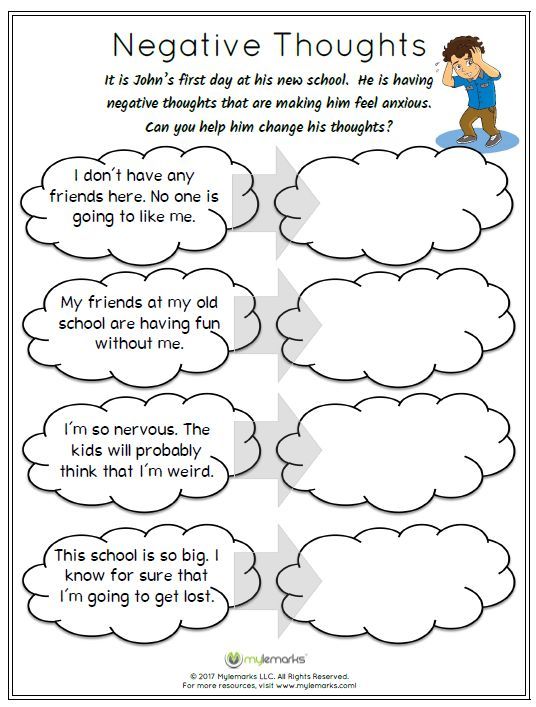 Swanson Swanson
Wendy Sue Swanson, MD, MBE, FAAP, who serves on the American Academy of Pediatrics Council on Communications and Media, is author of
Mama Doc Medicine: Finding Calm and Confidence in Child Health, Parenting, and World-Life Balance. |
- Last Updated
- 7/29/2021
- Source
- Mama Doc Medicine: Finding Calm and Confidence in Parenting, Child Health, and Work-Life Balance (Copyright © 2014 Wendy Sue Swanson)
The information contained on this Web site should not be used as a substitute for the medical care and advice of your pediatrician. There may be variations in treatment that your pediatrician may recommend based on individual facts and circumstances.
Manipulation and separation anxiety: what is it and its manifestations
What is separation anxiety?
Separation anxiety is a disorder caused by the fear of separation, separation from a loved one (usually the mother or father of a young child) or an object (eg, a favorite toy).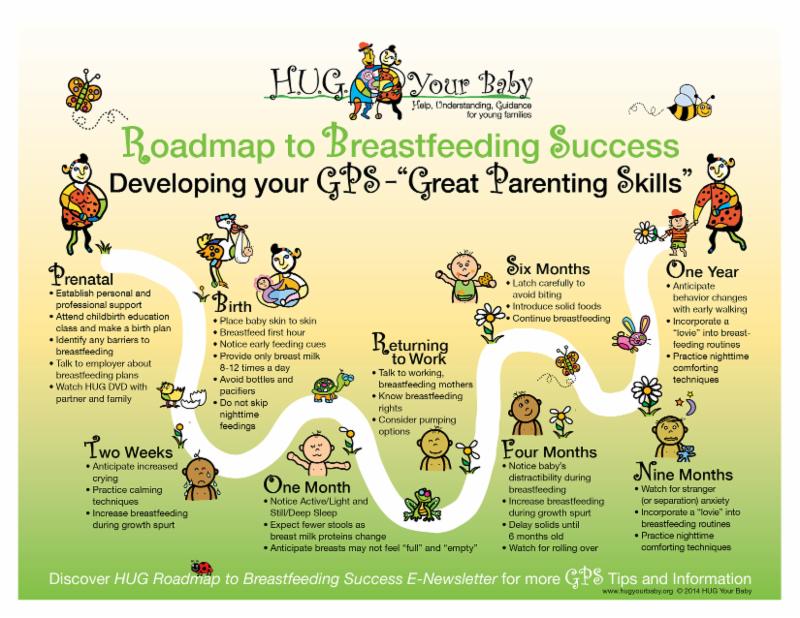 The fear of separation is considered normal in some circumstances: when the child is under two years old, if he goes to kindergarten or to a new school, if the family has recently moved to a new place. This fear can manifest itself in many ways, from mild anxiety to tantrums and intense constant anxiety. Parents can help the child deal with this, but if the fear develops into an anxiety disorder, the child may need medical attention. nine0005
The fear of separation is considered normal in some circumstances: when the child is under two years old, if he goes to kindergarten or to a new school, if the family has recently moved to a new place. This fear can manifest itself in many ways, from mild anxiety to tantrums and intense constant anxiety. Parents can help the child deal with this, but if the fear develops into an anxiety disorder, the child may need medical attention. nine0005
Separation anxiety occurs in almost all children. It can appear as early as 4 months and usually goes away by the age of two years. At this point, the child develops a sense of the permanence of the object, he understands that the parents continue to exist, even if they are not around. If the anxiety persists at an older age, the baby may need help.
Certain situations and factors can increase anxiety and increase the risk of an anxiety disorder, even in older children. Among them:
- stress associated with difficult life situations: illness or loss of a loved one, divorce of parents, relocation;
- temperament that affects the level of anxiety and increases it;
- the presence of anxiety problems or anxiety disorders in close relatives.
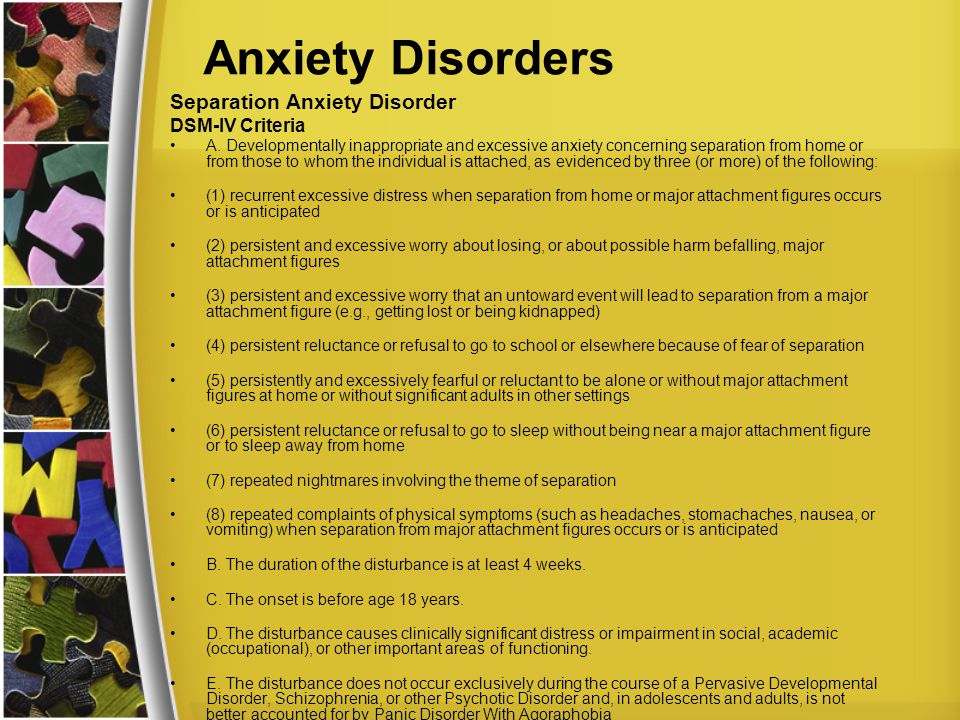
Separation anxiety is manifested by characteristic behavior. When parting with one of the parents, with any loved one or an important object for the child (toy, clothes), he begins to cry, worry, worry. The child may ask not to leave him, beg his parents not to leave. If this does not help, he may be very worried and continue to cry even in the absence of parents. After their return, the baby will calm down, but if the stress was strong, the condition may remain agitated or anxious. nine0005
Major symptoms of separation anxiety disorder include:
- Concentration problems. It is difficult for a child to concentrate on a game or any other activity, he constantly checks to see if he has been left;
- Constant anxiety: the child is constantly afraid that something bad will happen to him or his relatives, they will be kidnapped, they will disappear, they will disappear;
- Sleep problems: difficulty falling asleep, occasional awakenings, nightmares.
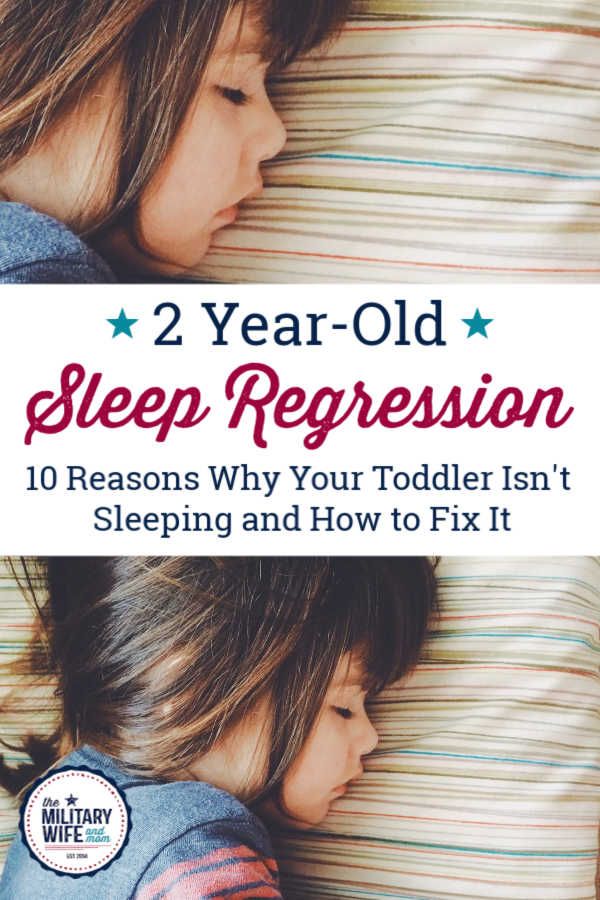 The child may refuse to sleep alone and come to his parents at night; nine0012
The child may refuse to sleep alone and come to his parents at night; nine0012 - Disorders of appetite;
- Unstable emotional state: irritability, anxiety, constant tension, tearfulness;
- Obsessive behavior: the child tries to be as close as possible to the parents, even if they do not go anywhere;
- Frequent urge to urinate, enuresis.
These signs can be used to distinguish anxiety from manipulation. If the child tries to manipulate the parents, he will calm down immediately after their return, behaving in the usual way. If anxiety or its consequences manifest themselves in those moments when parents do not go anywhere, this is due to a strong fear of loss. nine0005
How to deal with separation anxiety?
The fear of parting and the anxiety associated with it is part of normal growing up. It is important to help your child deal with them.
Let the changes be gradual. It is better if the baby stays without parents in an environment familiar to him: for example, with his grandmother, but at home, in his room, among the things that he knows.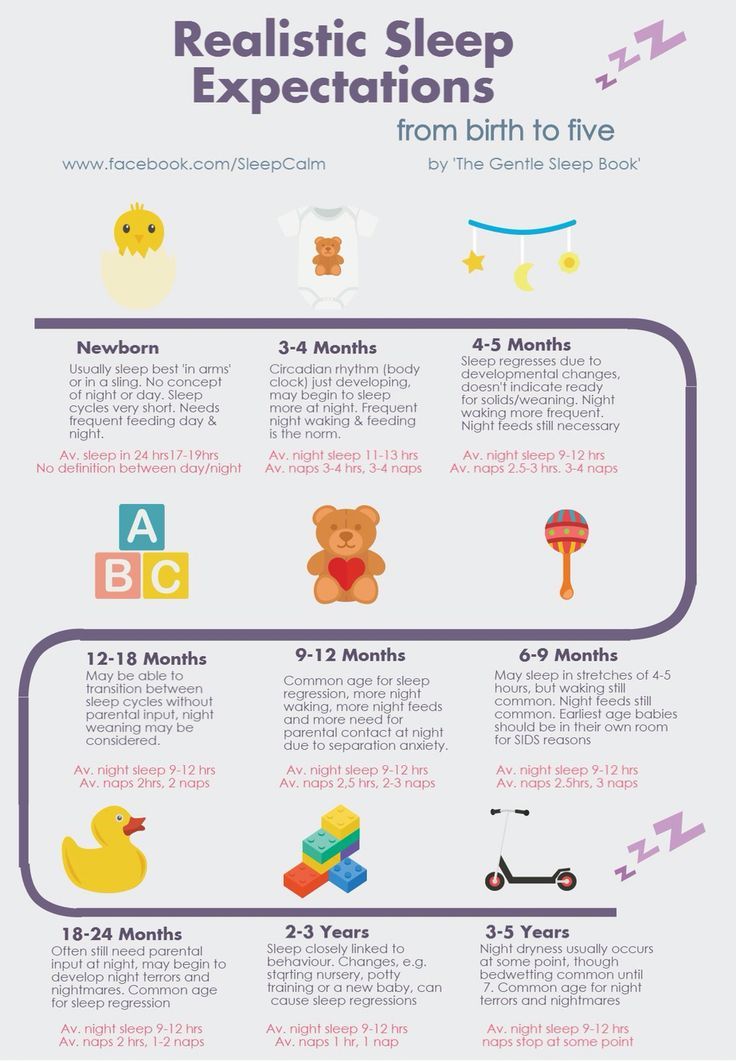 If the child needs to be left with a nanny, give him time to get to know her, get used to it. It is better if both the mother and the nanny will be next to the baby for the first few times. It is also better to increase the separation time gradually, if possible. nine0005
If the child needs to be left with a nanny, give him time to get to know her, get used to it. It is better if both the mother and the nanny will be next to the baby for the first few times. It is also better to increase the separation time gradually, if possible. nine0005
It is important to say goodbye correctly. To do this, you can create your own short but emotional rituals: for example, a strong hug. Even if the baby is crying, screaming, it is important to remain firm and calm. It is better to say goodbye briefly and leave quickly, but at the same time pay attention to the child, tell him that you will definitely return.
Promises must be made correctly and kept. Promise your baby to come back at a certain time so that he understands and remembers when this will happen: for example, after a walk or before dinner. It is important to keep these promises: they will give confidence that in the future mom or dad will return on time. nine0005
Important ! It is better to leave the child when he has eaten and slept. Hunger or fatigue increases irritation, and the baby may react to parting much more sharply.
Hunger or fatigue increases irritation, and the baby may react to parting much more sharply.
It is better to stick to a certain regimen. It will be easier for the child if the parents always leave and return at the same time. At the same time, the daily routine of the baby should be constant. Then he will know for sure that dad returns from work before dinner, or, for example, that mom goes to the store after breakfast. This will give a sense of constancy, and it will be easier to get used to parting. By maintaining calmness and consistency, anxiety can be overcome, even if its manifestations are very violent (Fig. 1). nine0005 Figure 1. What to do if a child has a tantrum. Source: MedPortal
Is it possible for a mother to leave her child?
Even when the child is very small, the mother cannot be near him all the time. Sometimes she has to leave him with her dad, grandma or babysitter, and that's okay. The baby must gradually learn independence, and parting with mom is part of that.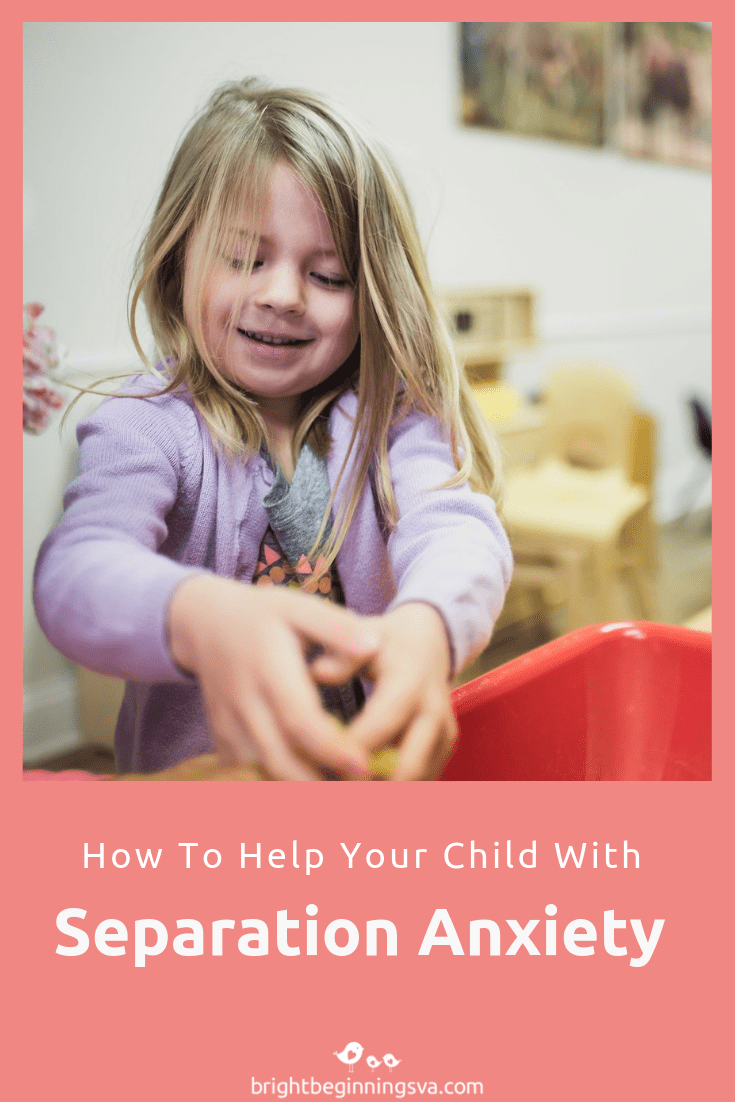 Mom can leave the child for a long time, for example, if she works. If at the same time the baby stays with a person he knows, receives the necessary care, as well as attention and love from his parents, this will not cause him injury, will not affect his development, and in the future will even simplify his social adaptation. nine0005 Separation from mother is a necessity during growing up. Photo: https://ru.freepik.com
Mom can leave the child for a long time, for example, if she works. If at the same time the baby stays with a person he knows, receives the necessary care, as well as attention and love from his parents, this will not cause him injury, will not affect his development, and in the future will even simplify his social adaptation. nine0005 Separation from mother is a necessity during growing up. Photo: https://ru.freepik.com
How to prepare a child for kindergarten?
A child should not be left alone in kindergarten right away. It is better if at first he comes to the group with his mother or nanny. On the first visits, he can be in the garden only during a walk, outside, without going inside. Gradually, the baby will become interested, and then you can increase the time of stay. When it's time to leave him alone in kindergarten, let him take with him his favorite toy or thing that will remind you of home. nine0005
It's better to start telling your child about the kindergarten, how interesting it is there, about how the child will be able to find new friends in the kindergarten.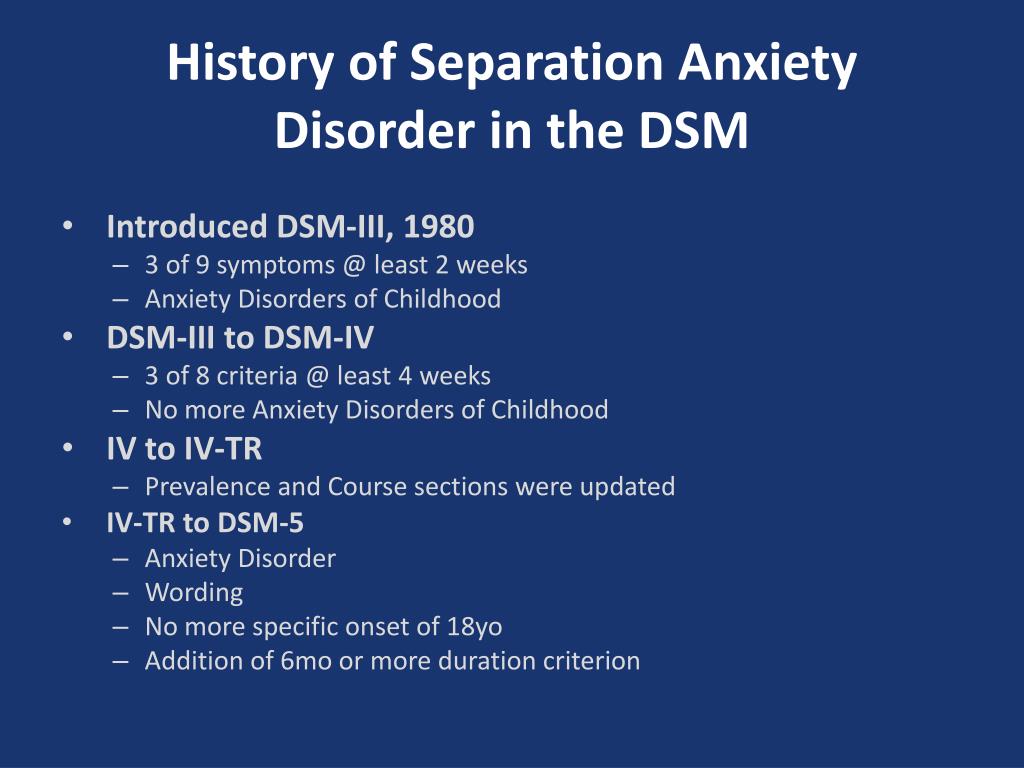 On walks, you can pass by the kindergarten so that this place is familiar to him. If the child still does not want to stay in the garden and cries, you need to say goodbye to him in the same way as at home: showing both love and firmness. It is important to say exactly when you will return for it.
On walks, you can pass by the kindergarten so that this place is familiar to him. If the child still does not want to stay in the garden and cries, you need to say goodbye to him in the same way as at home: showing both love and firmness. It is important to say exactly when you will return for it.
When should I visit a doctor?
Consult a doctor if separation anxiety develops into an anxiety disorder and the following symptoms occur:
- vomiting, shortness of breath, nausea, headache, or abdominal pain associated with imminent separation from parents;
- sleep disorders: insomnia, refusal to sleep in own bed, nightmares;
- excessive anxiety: fears, anxiety that something might happen to the parents, tension, behavioral disturbances. nine0012
It is best to contact your pediatrician first. He will give recommendations and, if necessary, refer the child to a child psychologist.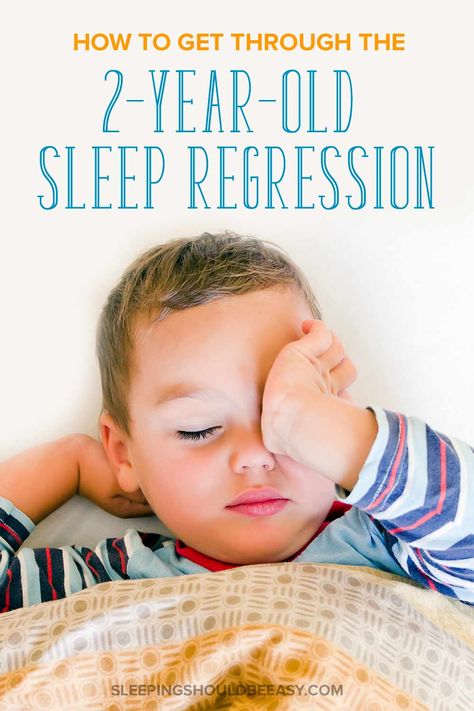
Conclusion
Little children are afraid to be left without parents. They may react to separation with crying, anxious behavior. This is normal and usually goes away by the age of two. Sometimes separation anxiety is so strong that the child develops an anxiety disorder, and then it is important to help him cope with this, teach him to calmly respond to separation from mom and dad, to show that there is nothing wrong with parting with them. nine0005
Sources
Childmind. Separation Anxiety Disorder Basics.
Help guide. Separation Anxiety and Separation Anxiety Disorder.
Separation anxiety in newborns and toddlers
Separation anxiety (ST) is the fear of increasing distance, the fear of separation, separation.
Pregnancy
Pregnancy is a period of symbiosis, when mother and baby form a single psycho-physiological system.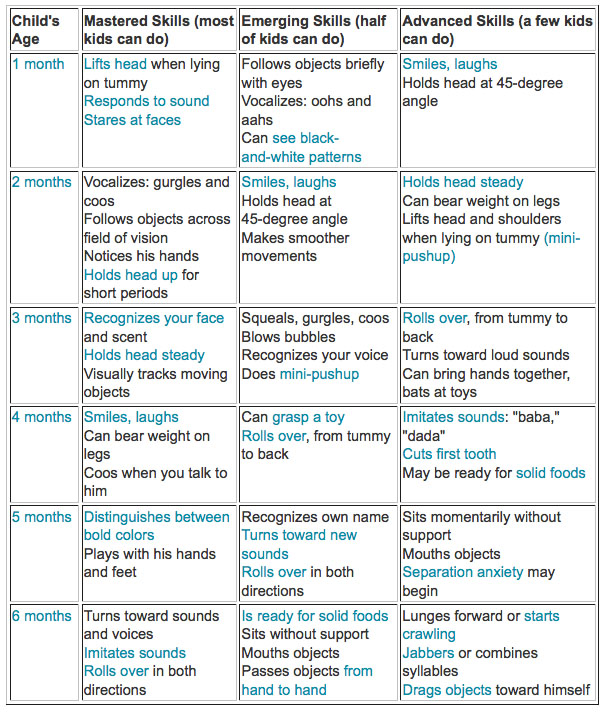 Birth is the first stage of separation in a mother-baby pair, here the first boundaries are formed - bodily, physical. nine0005
Birth is the first stage of separation in a mother-baby pair, here the first boundaries are formed - bodily, physical. nine0005
The following separation stages are related to the growing up of the baby, when he learns something new. Each of these stages may be accompanied by a sleep regression:
6 months
6 months - the baby learns to sit, distinguishes well between loved ones, and therefore he may experience a fear of separation from his mother.
Mom's ST at this age is manifested by fear of the growing independence of the child, as well as fear of change (swaddling, unsafe co-sleeping, falling asleep only with a breast or a bottle)
Help your baby: gently teach him the first steps in independence both during wakefulness and during sleep.
- To do this, you can:
- involve other family members in the process of laying down (alternate laying down with dad or grandmother)
- teach the baby to sleep in his crib (if the format of joint sleep, then concern for his safety)
- react differently ways for different needs of the baby (crying is not always about hunger)
- gradually increase the distance during the game during the day, showing your presence with your voice (mother is in the room, but not on the rug, but a little further) show the baby that mom is always there)
- emotionally encourage independent play (praise the baby, smile, do not "go to the phone" when the baby is calmly playing)
- Help mom: support for loved ones, building a plan to start working with sleep, physical and emotional self-care.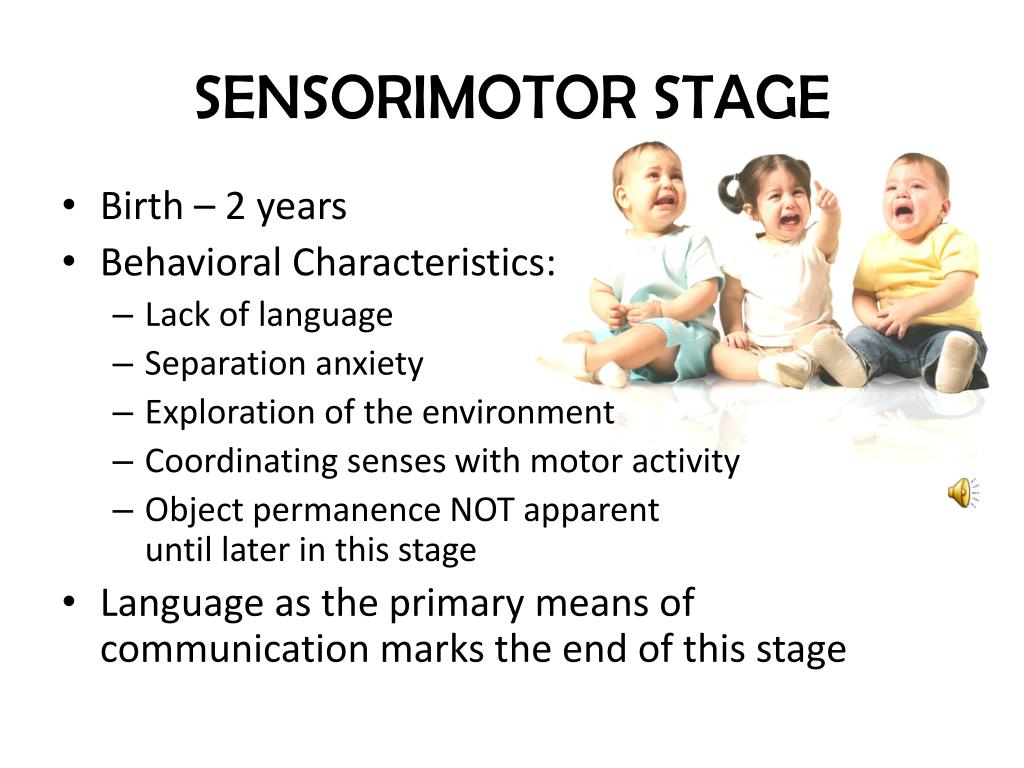 nine0005
nine0005
9 months
9 months - the baby gets up, his activity increases, he has a "fear of strangers", he seems to regress and again becomes very dependent on his mother.
Help for the baby:
- relevant ways of helping from the previous stage of development
- active separation of negative habits and sleep (using different types of help when falling asleep) emotional)
- emotional encouragement of the baby's free play ("you play very well by yourself", "it's great", etc.)
- a neutral reaction to "negative" behavior in the process of falling asleep (when the baby gets up, crawls, does not want to sleep, but does not cry - do not lay down, do not get angry, do not actively help), and mandatory help when crying.
Help for mom: delegation of help, attitude towards a positive result, differentiation of needs: one's own and the baby's.
12 months
12 months - first words, first steps.